|
WORK OF THE AGRICULTURE BRANCH
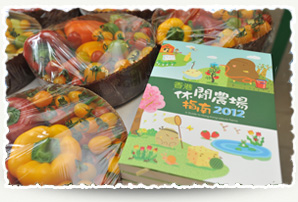
- To provide basic agricultural infrastructure and technical support for the development of modern, efficient and environmentally-friendly farming;
- To ensure the adequate provision and efficient operation of the government's wholesale marketing facilities for fresh food produce;
- To register credit unions and co-operatives and perform related duties;
- To license and regulate livestock farms; and
- To provide administrative support to the Vegetable Marketing Organization (VMO).
THE AGRICULTURE INDUSTRY
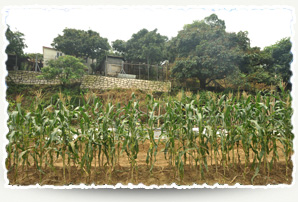 Agriculture in Hong Kong is undertaken mostly in the urban fringes. Currently, only 18 square kilometres out of the territory's 1,104 square kilometres of land area are farmed. Some 4,600 farmers, about 0.12 per cent of the territory's total work force, are engaged in agriculture. Agriculture in Hong Kong is undertaken mostly in the urban fringes. Currently, only 18 square kilometres out of the territory's 1,104 square kilometres of land area are farmed. Some 4,600 farmers, about 0.12 per cent of the territory's total work force, are engaged in agriculture.
The local agricultural industry involves producing quality fresh food through intensive land use and modern farming practices. Despite its relatively small scale, the industry produces a substantial amount of vegetables, poultry and pigs. Local agricultural production in the years 2010 and 2011 were valued at $615 million and $743 million respectively. Statistics on agricultural production, fresh foodstuff consumption and agricultural land utilisation are at Appendices 1, 2 and 3.
Vegetable crops grown year-round include Chinese white cabbage, flowering Chinese cabbage, lettuce and celtuce. Long bean, water spinach, Chinese spinach, cucumber and several species of Chinese gourd are produced in summer, while spinach, watercress, Chinese kale and matrimony vine are grown in the cooler months.
Orchids and ornamental plants are now grown all year round. Dahlia, chrysanthemum, lily and gladiolus are grown in winter, while ginger lily, lotus flower and sunflower are grown in summer. Peach blossom is grown specially for the Lunar New Year season.
PREMIUM VEGETABLES
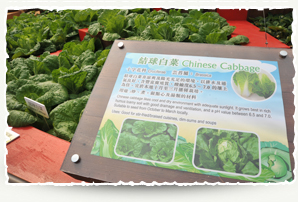 The Department continues to promote the cultivation of premium vegetables to serve niche markets and help farmers gain better economic returns. Seven improved varieties including a watermelon with golden-yellow rind, coloured sweet peppers, a mini wax gourd, a yellow cucumber, a green bitter cucumber, a sweet potato and Chinese cabbage were introduced to farmers for production in the year. The Department continues to promote the cultivation of premium vegetables to serve niche markets and help farmers gain better economic returns. Seven improved varieties including a watermelon with golden-yellow rind, coloured sweet peppers, a mini wax gourd, a yellow cucumber, a green bitter cucumber, a sweet potato and Chinese cabbage were introduced to farmers for production in the year.
Local Vegetable Farm Voluntary Registration Scheme
Since July 2006, the Department has been running a voluntary registration scheme for local vegetable farms. Under the scheme, the Department has set up a central vegetable farm database containing farmers' particulars, farm size, location and horticultural details. As at March 2012, 1,872 farms covering a total area of 415 hectares have joined the scheme.
Accredited Farm Scheme
The Department has been running a voluntary Accredited Farm Scheme since 1994. Under the Scheme, the Department advises participating farmers on the proper and safe use of pesticides, monitors their horticultural practices and samples their vegetables for pesticide residues analysis.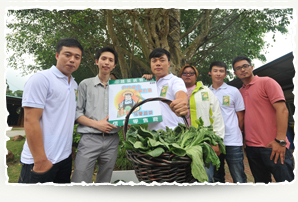 Accredited farmers market their vegetables through the VMO and the vegetables are subsequently distributed to designated retail outlets including wet market stalls and supermarkets. To enable easy identification by the public, every designated outlet carries a logo of VMO "Accredited Retailer". Accredited farmers market their vegetables through the VMO and the vegetables are subsequently distributed to designated retail outlets including wet market stalls and supermarkets. To enable easy identification by the public, every designated outlet carries a logo of VMO "Accredited Retailer".
As at March 2012, 259 local farms covering a total area of 82 hectares and 37 vegetable farms operated by Hong Kong farmers in Guangdong and Ningxia covering 2,678 hectares had been accredited. There were 297 accredited retail outlets located in different districts to provide easy access to accredited vegetables for consumers.
Organic Farming
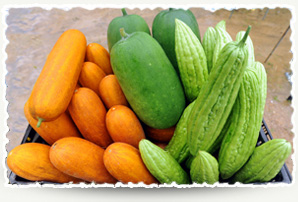 Since December 2000, the Department has been helping local farmers shift towards organic farming practices by providing relevant knowledge, technical support and low-interest loans, while the VMO assists farmers in selling their organic produce through its established sales channels. Since December 2000, the Department has been helping local farmers shift towards organic farming practices by providing relevant knowledge, technical support and low-interest loans, while the VMO assists farmers in selling their organic produce through its established sales channels.
Up to March 2012, 186 local farms covering a total area of 70 hectares have joined the Department's "Organic Farming Support Service". Together, on average they produced about 5 tonnes of organic vegetables per day, including vegetable varieties such as lettuce, white cabbage, flowering cabbage, water spinach, Chinese spinach, Chinese kale, Garland chrysanthemum, eggplant, bitter cucumber, wax gourd, yard-long bean, cherry tomato, carrot, etc.
The Department also supports the Hong Kong Organic Resource Centre, a non-profit making organisation co-founded by the Hong Kong Baptist University, the Hong Kong Organic Farming Association and the Produce Green Foundation, to develop and implement certification standards for organic production and processing in Hong Kong. Since the launch of this organic certification service in late 2004, 95 organic farms and 3 processing companies have been certified.
LIVESTOCK FARM LICENSING
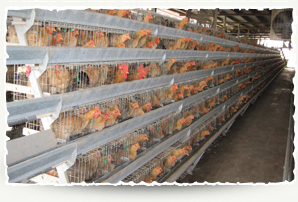 Since the implementation of the Livestock Waste Control Scheme in 1994, all livestock farms must hold a Livestock Keeping Licence (LKL) for the keeping of livestock. In order to obtain an LKL, the farmer must install appropriate waste treatment facilities that meet minimum discharge standards. The LKL also contains provisions relating to the protection of public health and includes conditions relating to the control and prevention of animal diseases, such as avian influenza. All licensed livestock farms are inspected regularly, particularly those suspected of discharging waste illegally or where waste treatment practices have caused a nuisance to surrounding communities. Action is also taken against illegal livestock keeping. Since the implementation of the Livestock Waste Control Scheme in 1994, all livestock farms must hold a Livestock Keeping Licence (LKL) for the keeping of livestock. In order to obtain an LKL, the farmer must install appropriate waste treatment facilities that meet minimum discharge standards. The LKL also contains provisions relating to the protection of public health and includes conditions relating to the control and prevention of animal diseases, such as avian influenza. All licensed livestock farms are inspected regularly, particularly those suspected of discharging waste illegally or where waste treatment practices have caused a nuisance to surrounding communities. Action is also taken against illegal livestock keeping.
To reduce the public health and environmental pollution problems associated with livestock keeping, the Government introduced a voluntary surrender scheme for poultry and pig farms in 2005 and 2006 respectively as well as a buyout scheme for poultry farms in 2008. These schemes encourage livestock keepers to surrender their LKLs and cease their farm operation permanently in return for ex-gratia payments. There remains now 43 pig farms and 30 chicken farms operating with the maximum rearing capacity of 74,640 pigs and about 1.3 million chickens respectively.
To assist pig farmers in striving for better husbandry efficiency and higher management standards, the Department has formulated a set of Code of Practice for Pig Farming (CoP) as general guidelines for farm operation and will monitor its implementation through regular farm inspection. Training workshops and seminars will continue to be organised to improve the management practices of pig farmers with a view to assisting them to comply with the requirements in the CoP.
AGRICULTURAL STRUCTURES
Greenhouses
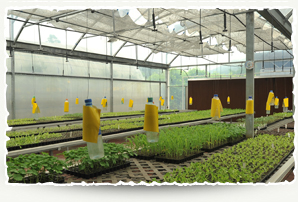 Controlled-environment greenhouses are built with transparent plastic films or polycarbonate sheets to provide an enclosed environment that enables the regulation of temperature, humidity and intensity of light for the optimal production of crops. To further increase productivity, advanced greenhouses are often equipped with automatic irrigation, fertilisation and/or spraying systems as well. Controlled-environment greenhouses are built with transparent plastic films or polycarbonate sheets to provide an enclosed environment that enables the regulation of temperature, humidity and intensity of light for the optimal production of crops. To further increase productivity, advanced greenhouses are often equipped with automatic irrigation, fertilisation and/or spraying systems as well.
The Department has adapted greenhouse technology to local conditions and extended it to farmers through seminars and demonstrations for the intensive production of high value crops, such as coloured sweet peppers, white bitter cucumber, rock melon, edible fungus, edible white chrysanthemum and lily. Newsletters are issued regularly to update farmers on the latest developments and an electronic version is also available on the Department's website.
Letters of Approval
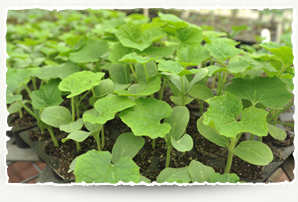 Under the terms and conditions of land grants, any farmer who wishes to build an agricultural structure (greenhouse, livestock shed, hatchery, fish pond or store room) on leasehold agricultural land must apply to the Lands Department for a Letter of Approval for Agricultural Structures. To facilitate applications by farmers, the AFCD has streamlined procedures with the Lands Department and taken up the responsibility for assessing such applications. During 2011-12, the Department processed 12 applications covering 42 agricultural structures. Under the terms and conditions of land grants, any farmer who wishes to build an agricultural structure (greenhouse, livestock shed, hatchery, fish pond or store room) on leasehold agricultural land must apply to the Lands Department for a Letter of Approval for Agricultural Structures. To facilitate applications by farmers, the AFCD has streamlined procedures with the Lands Department and taken up the responsibility for assessing such applications. During 2011-12, the Department processed 12 applications covering 42 agricultural structures.
SUPPORT AND ASSISTANCE
Agricultural Support Services
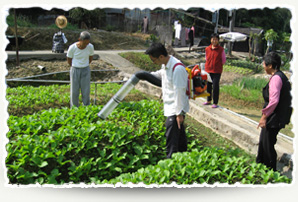 The Department promotes the return of fallow land not earmarked for development to cultivation by helping farmers arrange land tenancy, improving soil conditions, providing marketing facilities and other technical assistances. During 2011-12, about 10 hectares of such rehabilitated agricultural land were serviced. The Department responded to 6,793 technical inquiries related to agricultural production or development and conducted 2,010 field investigations in connection with irrigation and other agricultural matters. The Department promotes the return of fallow land not earmarked for development to cultivation by helping farmers arrange land tenancy, improving soil conditions, providing marketing facilities and other technical assistances. During 2011-12, about 10 hectares of such rehabilitated agricultural land were serviced. The Department responded to 6,793 technical inquiries related to agricultural production or development and conducted 2,010 field investigations in connection with irrigation and other agricultural matters.
FARMFEST
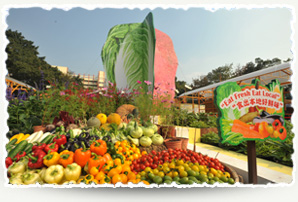 To help farmers expand their customer base and to provide public with the opportunity to shop for premium local produce in the bustling city, the Department, VMO, Fish Marketing Organization and Organising Committee of FARMFEST jointly organised FARMFEST 2012 at Fa Hui Park, Mong Kok from December 30, 2011 to January 2, 2012. Some 300 stalls showcased a wide variety of local agricultural and fishery products. Over the years, FARMFEST has established itself as a major agricultural market, where farmers bring their produce for sale direct to the public and connect with their consumers. FARMFEST 2012 attracted over 280,000 visitors. To help farmers expand their customer base and to provide public with the opportunity to shop for premium local produce in the bustling city, the Department, VMO, Fish Marketing Organization and Organising Committee of FARMFEST jointly organised FARMFEST 2012 at Fa Hui Park, Mong Kok from December 30, 2011 to January 2, 2012. Some 300 stalls showcased a wide variety of local agricultural and fishery products. Over the years, FARMFEST has established itself as a major agricultural market, where farmers bring their produce for sale direct to the public and connect with their consumers. FARMFEST 2012 attracted over 280,000 visitors.
Agricultural Credit
The Department manages the Kadoorie Agricultural Aid Loan Fund, the J.E. Joseph Trust Fund and the Vegetable Marketing Organization Loan Fund to meet farmers' credit needs. A total of $6.02 million was lent to farmers during 2011-12, including 48 loans ($3.4 million) to crop farmers and 21 loans ($2.62 million) to livestock farmers. A total of $2.16 million was lent to fish farmers, including 6 loans ($0.62 million) to pond fish farmers and 14 loans ($1.54 million) to mariculturists.
Emergency Relief
Emergency relief grants are issued to needy farmers who suffer from natural disasters to help them rehabilitate their farming operations. Grants totalling $3.87 million were distributed to 1,447 farmers during 2011-12.
FRESH FOOD WHOLESALE MARKETS
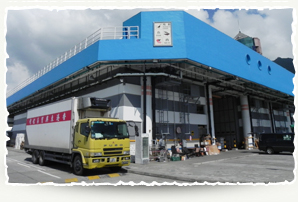 The Department manages four government wholesale food markets, providing some 2,600 trading stalls and related ancillary facilities. Altogether, these markets provide some 34.4% of the fresh food items (vegetables, freshwater fish, eggs, fruits and live poultry) consumed by the community. Appendix 4 gives details of the market throughput in these wholesale markets.
The Department manages four government wholesale food markets, providing some 2,600 trading stalls and related ancillary facilities. Altogether, these markets provide some 34.4% of the fresh food items (vegetables, freshwater fish, eggs, fruits and live poultry) consumed by the community. Appendix 4 gives details of the market throughput in these wholesale markets.
Vegetable Marketing Organization
The Vegetable Marketing Organization (VMO) is set up under the Agricultural Products (Marketing) Ordinance (Cap 277) as a non-profit making organisation to provide facilities and services for the orderly and efficient marketing of vegetables. The organisation charges wholesalers a commission of up to 10% of the total value of sales for providing trading facilities, accounting and pesticide residue testing services. Its surpluses are used to support agricultural programmes and development projects. In addition, the VMO has set up the VMO Loan Fund to provide credit assistance to farmers, and the Agricultural Products Scholarship Fund to promote education and training in agriculture.
Credit Unions and Co-operative Societies
Any 15 or more persons who wish to associate themselves together as a credit union for the objects to promote thrift, to receive the savings of its members either as payment on shares or as deposits and to make loans to its members for provident or productive purposes, may be registered under the Credit Unions Ordinance (Cap 119). The Registrar of Credit Unions is responsible for the registration of credit unions and their by-laws, the examination and inquiry, and general supervision.
Any 10 or more persons who wish to associate themselves together as a co-operative society for the objects of the promotion of the economic interests of its members in accordance with co-operative principles, or facilitating the operations of such a society, may be registered under the Co-operative Societies Ordinance (Cap 33). The Registrar of Co-operative Societies is responsible for the registration of societies and their by-laws, the inspection or audit of accounts and general supervision.
Statistics on registered credit unions and co-operative societies are at Appendices 5 and 6.
|











 Agriculture in Hong Kong is undertaken mostly in the urban fringes. Currently, only 18 square kilometres out of the territory's 1,104 square kilometres of land area are farmed. Some 4,600 farmers, about 0.12 per cent of the territory's total work force, are engaged in agriculture.
Agriculture in Hong Kong is undertaken mostly in the urban fringes. Currently, only 18 square kilometres out of the territory's 1,104 square kilometres of land area are farmed. Some 4,600 farmers, about 0.12 per cent of the territory's total work force, are engaged in agriculture. The Department continues to promote the cultivation of premium vegetables to serve niche markets and help farmers gain better economic returns. Seven improved varieties including a watermelon with golden-yellow rind, coloured sweet peppers, a mini wax gourd, a yellow cucumber, a green bitter cucumber, a sweet potato and Chinese cabbage were introduced to farmers for production in the year.
The Department continues to promote the cultivation of premium vegetables to serve niche markets and help farmers gain better economic returns. Seven improved varieties including a watermelon with golden-yellow rind, coloured sweet peppers, a mini wax gourd, a yellow cucumber, a green bitter cucumber, a sweet potato and Chinese cabbage were introduced to farmers for production in the year. Accredited farmers market their vegetables through the VMO and the vegetables are subsequently distributed to designated retail outlets including wet market stalls and supermarkets. To enable easy identification by the public, every designated outlet carries a logo of VMO "Accredited Retailer".
Accredited farmers market their vegetables through the VMO and the vegetables are subsequently distributed to designated retail outlets including wet market stalls and supermarkets. To enable easy identification by the public, every designated outlet carries a logo of VMO "Accredited Retailer". Since December 2000, the Department has been helping local farmers shift towards organic farming practices by providing relevant knowledge, technical support and low-interest loans, while the VMO assists farmers in selling their organic produce through its established sales channels.
Since December 2000, the Department has been helping local farmers shift towards organic farming practices by providing relevant knowledge, technical support and low-interest loans, while the VMO assists farmers in selling their organic produce through its established sales channels.  Since the implementation of the Livestock Waste Control Scheme in 1994, all livestock farms must hold a Livestock Keeping Licence (LKL) for the keeping of livestock. In order to obtain an LKL, the farmer must install appropriate waste treatment facilities that meet minimum discharge standards. The LKL also contains provisions relating to the protection of public health and includes conditions relating to the control and prevention of animal diseases, such as avian influenza. All licensed livestock farms are inspected regularly, particularly those suspected of discharging waste illegally or where waste treatment practices have caused a nuisance to surrounding communities. Action is also taken against illegal livestock keeping.
Since the implementation of the Livestock Waste Control Scheme in 1994, all livestock farms must hold a Livestock Keeping Licence (LKL) for the keeping of livestock. In order to obtain an LKL, the farmer must install appropriate waste treatment facilities that meet minimum discharge standards. The LKL also contains provisions relating to the protection of public health and includes conditions relating to the control and prevention of animal diseases, such as avian influenza. All licensed livestock farms are inspected regularly, particularly those suspected of discharging waste illegally or where waste treatment practices have caused a nuisance to surrounding communities. Action is also taken against illegal livestock keeping. Controlled-environment greenhouses are built with transparent plastic films or polycarbonate sheets to provide an enclosed environment that enables the regulation of temperature, humidity and intensity of light for the optimal production of crops. To further increase productivity, advanced greenhouses are often equipped with automatic irrigation, fertilisation and/or spraying systems as well.
Controlled-environment greenhouses are built with transparent plastic films or polycarbonate sheets to provide an enclosed environment that enables the regulation of temperature, humidity and intensity of light for the optimal production of crops. To further increase productivity, advanced greenhouses are often equipped with automatic irrigation, fertilisation and/or spraying systems as well. Under the terms and conditions of land grants, any farmer who wishes to build an agricultural structure (greenhouse, livestock shed, hatchery, fish pond or store room) on leasehold agricultural land must apply to the Lands Department for a Letter of Approval for Agricultural Structures. To facilitate applications by farmers, the AFCD has streamlined procedures with the Lands Department and taken up the responsibility for assessing such applications. During 2011-12, the Department processed 12 applications covering 42 agricultural structures.
Under the terms and conditions of land grants, any farmer who wishes to build an agricultural structure (greenhouse, livestock shed, hatchery, fish pond or store room) on leasehold agricultural land must apply to the Lands Department for a Letter of Approval for Agricultural Structures. To facilitate applications by farmers, the AFCD has streamlined procedures with the Lands Department and taken up the responsibility for assessing such applications. During 2011-12, the Department processed 12 applications covering 42 agricultural structures.  The Department promotes the return of fallow land not earmarked for development to cultivation by helping farmers arrange land tenancy, improving soil conditions, providing marketing facilities and other technical assistances. During 2011-12, about 10 hectares of such rehabilitated agricultural land were serviced. The Department responded to 6,793 technical inquiries related to agricultural production or development and conducted 2,010 field investigations in connection with irrigation and other agricultural matters.
The Department promotes the return of fallow land not earmarked for development to cultivation by helping farmers arrange land tenancy, improving soil conditions, providing marketing facilities and other technical assistances. During 2011-12, about 10 hectares of such rehabilitated agricultural land were serviced. The Department responded to 6,793 technical inquiries related to agricultural production or development and conducted 2,010 field investigations in connection with irrigation and other agricultural matters. To help farmers expand their customer base and to provide public with the opportunity to shop for premium local produce in the bustling city, the Department, VMO, Fish Marketing Organization and Organising Committee of FARMFEST jointly organised FARMFEST 2012 at Fa Hui Park, Mong Kok from December 30, 2011 to January 2, 2012. Some 300 stalls showcased a wide variety of local agricultural and fishery products. Over the years, FARMFEST has established itself as a major agricultural market, where farmers bring their produce for sale direct to the public and connect with their consumers. FARMFEST 2012 attracted over 280,000 visitors.
To help farmers expand their customer base and to provide public with the opportunity to shop for premium local produce in the bustling city, the Department, VMO, Fish Marketing Organization and Organising Committee of FARMFEST jointly organised FARMFEST 2012 at Fa Hui Park, Mong Kok from December 30, 2011 to January 2, 2012. Some 300 stalls showcased a wide variety of local agricultural and fishery products. Over the years, FARMFEST has established itself as a major agricultural market, where farmers bring their produce for sale direct to the public and connect with their consumers. FARMFEST 2012 attracted over 280,000 visitors.  The Department manages four government wholesale food markets, providing some 2,600 trading stalls and related ancillary facilities. Altogether, these markets provide some 34.4% of the fresh food items (vegetables, freshwater fish, eggs, fruits and live poultry) consumed by the community.
The Department manages four government wholesale food markets, providing some 2,600 trading stalls and related ancillary facilities. Altogether, these markets provide some 34.4% of the fresh food items (vegetables, freshwater fish, eggs, fruits and live poultry) consumed by the community. 